I get asked the question all the time “How is skiing in the Alps different than USA.” I always love this question and I have plenty of colorful answers as they are kind of similar but the nuances are quite a bit different. Many skiers I talk to want to explore skiing in Europe but they are scared to do so. They fear the language barrier and the unknown of doing something they love in a foreign country. These ski tips should help you demystify the differences between the Alps and the Rockies. I urge you to try skiing in Europe at least once. I bet you will love it as much as I do. There’s nothing like exploring different cultures on your skis. You can access unbelievable places by your own ambitions and curiosities.

On and Off-Piste
These terms can be used interchangeably, but in the Alps they say Piste and here in the USA we refer to them as ski Trails. A piste is a marked ski or snowboard run. These are groomed/un-groomed marked trails, most typically in Europe they are groomers. Off-Piste means you are venturing off the marked trail, into the trees or ungroomed more natural terrain.
Conditions can vary due to natural features. In the Alps you will find most skiers stay in between the markers on the groomers. This is very different than here in the States where we adventure all over the mountain. Bump runs don’t excite the Europeans like they beckon us here. If you plan on going ski touring off-piste in Europe I highly recommend you hire a professional ski guide. They will take you around safely and a guide also has knowledge about glacier crevasses, avalanche prone territory and natural features including cliffs etc. They know the area topography and can help if there is an emergency.

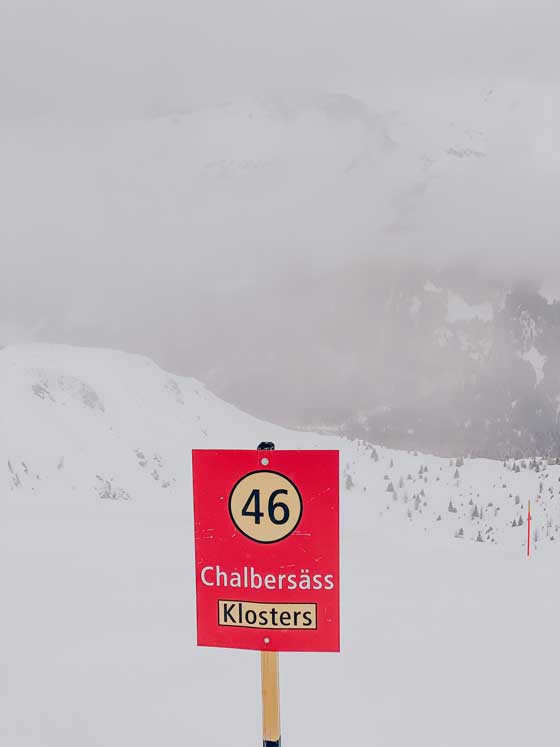
Signs & Markers
Skiable terrain in the Alps is way more vast, linking villages and even countries together. Trails are marked with circular numbers instead of the characteristic trail names that we have here. Pay close attention to the markers as you cruise around, the trails will all get you somewhere but not necessarily within the resort you started in! As far as the color codes go in Europe:
- Green: First timers, barely any grade and usually pretty wide
- Blue: Beginner slope (US Green)
- Red: Intermediate slope (US Blue)
- Black: Expert slope (US Black diamond)
- Orange: Extreme terrain (same in US)
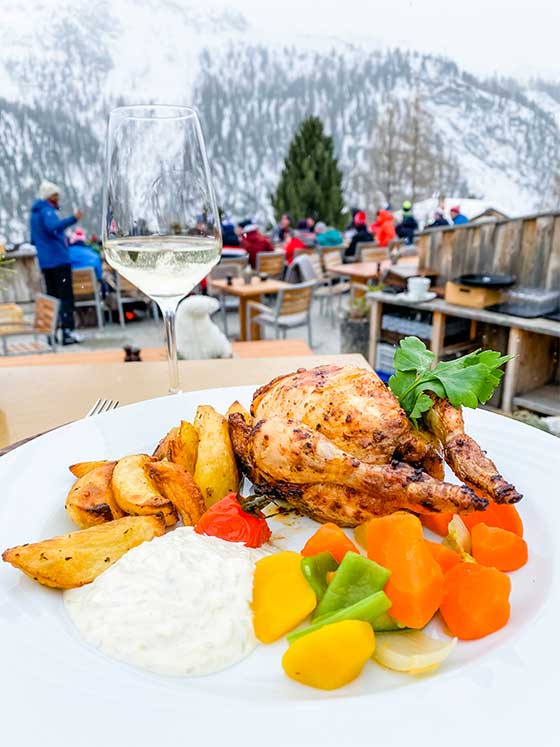
Restaurants & Bars
This is one of the main reasons you visit the Alps to ski. You will find charming eateries and places for drinks that are locally owned and so delicious. Often ingredients are locally sourced and family run, one of my favorites is Chez Vrony in Zermatt. Restauranteurs take great pride in the daily offerings. Small, remote refugios and huts serve up regional dishes. Larger on mountain dining will have more complex menus, but the experiences are always grand. Prepare for extra time as lunches are long and drenched in wine and grappa. When the sun is out snow revelers soak it in for hours. The restaurants are not made for just a fuel stop, they are there for the lifestyle as well. Even in the cafeterias, you will find delicious regional fare.
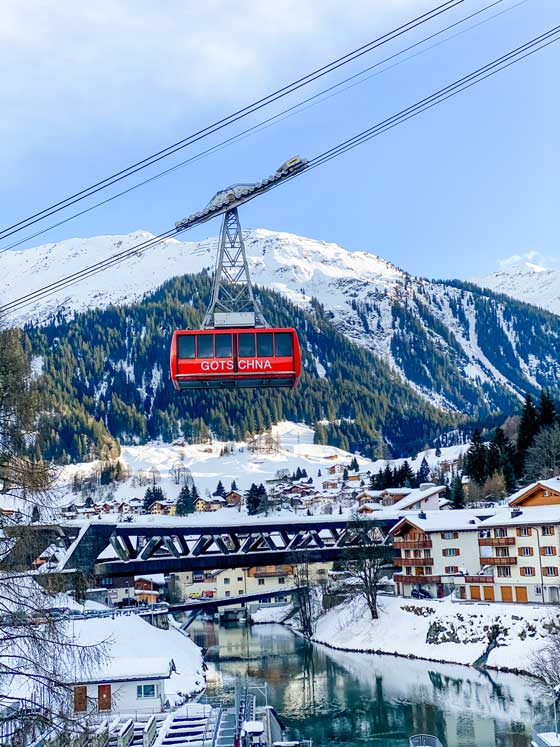
All Types of Chairlifts, Feniculars, Cable Cars and T-bars
This is a very intriguing difference and can be a bit intimidating. The chairlift infrastructure in the Alps always baffles me. Most lift systems are manufactured in Switzerland and Austria with the Doppelmayr/Garaventa group being the largest producer. When there is new technology you will find it there first, with exceptions of course. Big Sky Resort in Montana has the first 8-pack Dopplemayr D-line Direct Drive chairlift in the world, appropriately named called the Ramcharger.
My nemisis in the Alps are the T-Bars, these 2 person bars drag you uphill with your skis on the ground. They can transport you to excellent terrain…but I also have a hard time both getting on and the dismount without a buddy. Try to ride with a friend, it’s great time to tell stories. In the Alps you will also experience many cable cars, holding up to 200 guests. Try to avoid being trapped in the middle of the tram, a space by the window is best, they can get very stuffy! An easier ride is the underground mountain railways/funiculars. They can take you up the mountain quickly and keep you warm and out of the elements.
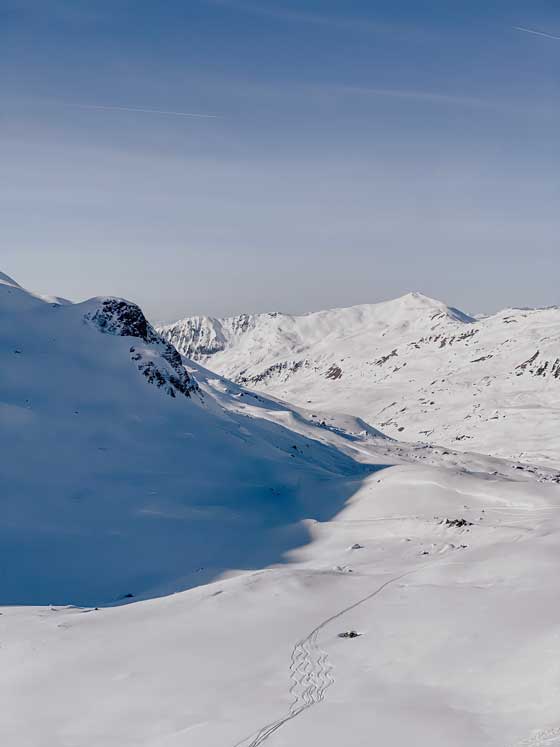
Timberline / Tree Line
Here in Colorado, our timberline, the edge of the habitat at which trees are able to grow, goes up to about 11,000 – 12,000 feet. In the Alps its a bit lower 8,200 – 9,800 feet (2500 – 3000 meters.) What does this mean for your skiing? This means that most of the skiable terrain is located above the treeline in Europe. If you like using trees as your guide on a stormy day here in the US, that likely won’t be an option in the Alps. Storms move in quickly and visibility can be hindered before you know it. To make sure to stay on the piste one must stay between the orange ropes, they will be your biggest guides in case of a whiteout.

Villages and International Borders
Unlike the USA where you are likely skiing one area at a time, ie: Vail, Aspen, Park City, etc. Our ski resorts are not connected here in the States. In the Alps you can easily access neighboring villages and even other countries. For example when you are in Zermatt, there is the option to purchase an international ski pass where you can ski across the Italian border into neighboring Cervinia. One minute you see Swiss flags flying, the next Italian. This is a phenomena that happens often throughout the Alps so be sure to read trail maps and look at signs carefully. What is a 15 minute ski into another country can take hours to get back in a taxi if you miss the last lift back home.
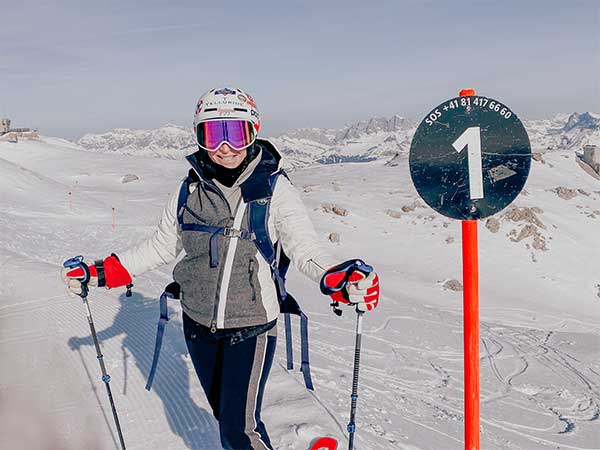
Alpenglow Ski Safaris
If you are curious about skiing in the Alps and want the comfort of English speaking guides with excellent credentials, hit up my friends at Alpenglow Ski Safaris based in Telluride, CO. They offer several trips a year to France, Switzerland and Austria. I travel with them at least once a year. They know the in’s and out’s of the on and off-piste terrain. They will also hook you up with the best foodie & cultural experiences while abroad.

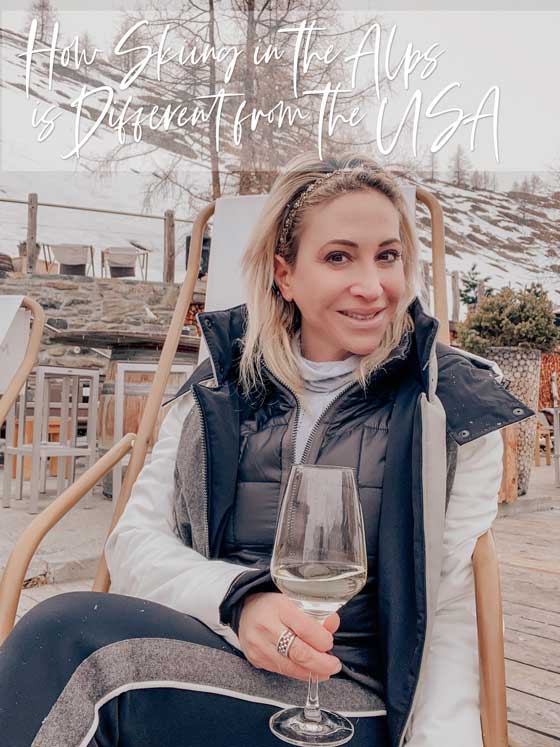

Amazing post, we love skiing in the alps! One of our favourite things is how many countries the mountains cover, so you can experience skiing in France, Italy, Switzerland and Austria 🙂